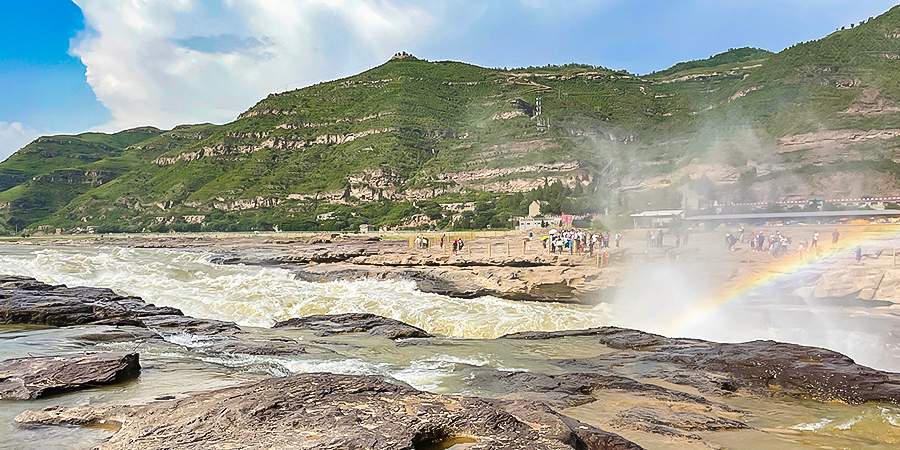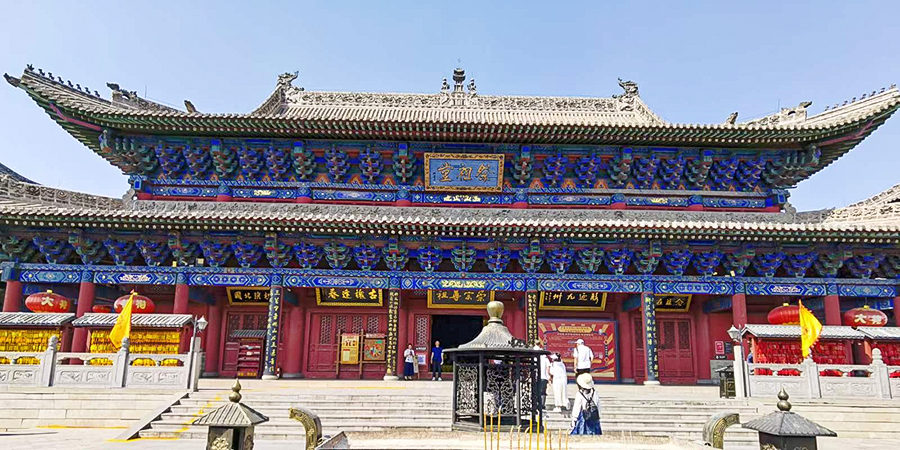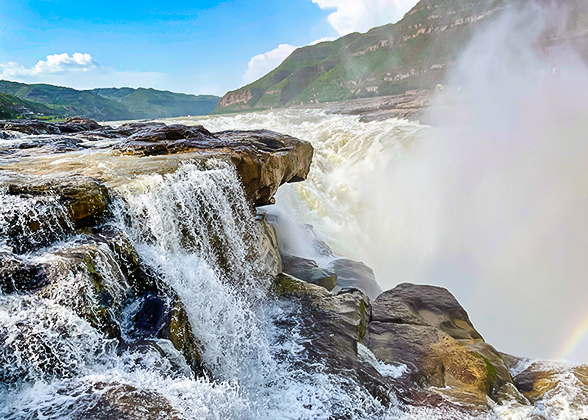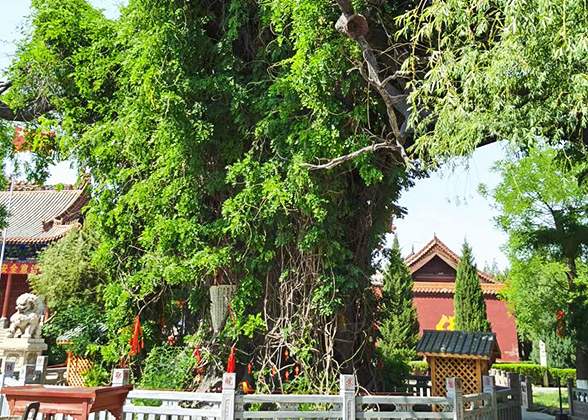Linfen Travel Guide
Linfen Facts
Chinese Name: 临汾 (lín fén)
Population: 4,508,400
Area: 20,300 square kilometers (7,838 square miles)
Location: in the southwest of Shanxi Province, north China
Administrative Division: 1 district (Yaodu); 14 counties (Quwo, Yicheng, Xiangfen, Hongtong, Guxian, Anze, Fushan, Jixian, Xiangning, Puxian, Daning, Yonghe, Xixian, Fenxi); 2 county-level cities (Houma, Huozhou)
Area Code: 0357
Zip Code: 041000
GDP (2019): CNY 145.26 billion (USD 21.06 billion)
Highlighting Hukou Waterfalls
Linfen City is situated in southwestern Shanxi Province, on the middle reaches of the Yellow River. It neighbors Changzhi and Jincheng to the east, Jinzhong and Luliang to the north, Yuncheng to the south and finally, it is separated from Shaanxi Province by the Yellow River to the west. The city is an important grain and cotton production base in North China, rich in wheat, cotton, etc. At the same time, it is also one of the three major high-quality coking coal bases.
Many people know Linfen from the spectacular Hukou Waterfalls, which is the second-largest waterfall in China and the most unique yellow waterfall in the world. While for the descendants of immigrants from Linfen, this city is their root and hometown that they have always been concerned about. In the nearly 50 years of the Ming Dynasty (1368 - 1912), Linfen witnessed 18 large-scale official immigrants. Starting from a scholar tree, the immigrants mainly moved to 18 provinces, including Beijing, Hebei and Henan. The old scholar tree now is protected in the Hongtong Dahuaishu Ancestor Memorial Garden where visitors can see the immigration scenes presented by reliefs and ancient buildings to learn about local folk customs.
 |
| Hukou Waterfall with a Rainbow |
Linfen Attractions - Things to Do
![]() Hukou Waterfalls is the grandest yellow waterfall in the world. It is located in the Qinjin (Shaanxi-Shanxi) Gorge on the middle reaches of the Yellow River and 45 kilometers away from the Jixian Country, Shanxi Province. To the west of the waterfall is the Yichuan County of Shaanxi Province. Waterfalls gush down into the roaring water of the river through the precipitous rocks in the abrupt canyon. The magnificent spectacle makes the waterfall the second largest, after the largest Huangguoshu Waterfall in Guizhou.
Hukou Waterfalls is the grandest yellow waterfall in the world. It is located in the Qinjin (Shaanxi-Shanxi) Gorge on the middle reaches of the Yellow River and 45 kilometers away from the Jixian Country, Shanxi Province. To the west of the waterfall is the Yichuan County of Shaanxi Province. Waterfalls gush down into the roaring water of the river through the precipitous rocks in the abrupt canyon. The magnificent spectacle makes the waterfall the second largest, after the largest Huangguoshu Waterfall in Guizhou.
![]() The Great Scholar Tree of Hongtong County: It is the most famous ruins of the Ming Dynasty (1368-1644), during which time large immigration occurred in China. Historical records show that governors were sent by the court to Guangji Temple to manage the immigration affairs for fifty years from 1368. For hundreds of years, the great scholar trees near the Guangji Temple became the root, origin and home for governors seeking relief from homesickness. It gradually becomes a sacred land for root seeking and ancestor worshipping.
The Great Scholar Tree of Hongtong County: It is the most famous ruins of the Ming Dynasty (1368-1644), during which time large immigration occurred in China. Historical records show that governors were sent by the court to Guangji Temple to manage the immigration affairs for fifty years from 1368. For hundreds of years, the great scholar trees near the Guangji Temple became the root, origin and home for governors seeking relief from homesickness. It gradually becomes a sacred land for root seeking and ancestor worshipping.
|
|
![]() Yao Temple was first established during the Jin Dynasty (265-420) in the present southern outskirt. It was believed that the city was made the capital of the nation by Emperor Yao, who is a great sage in the Chinese prehistoric ages prior to Shun and Yu the Great. Later generations then built the temple here to eulogize his laudable feats.
Yao Temple was first established during the Jin Dynasty (265-420) in the present southern outskirt. It was believed that the city was made the capital of the nation by Emperor Yao, who is a great sage in the Chinese prehistoric ages prior to Shun and Yu the Great. Later generations then built the temple here to eulogize his laudable feats.
![]() Other Scenic Spots: Huozhou Drum Tower, Xiaoxitian Nunnery, Guangsheng Temple
Other Scenic Spots: Huozhou Drum Tower, Xiaoxitian Nunnery, Guangsheng Temple
 |
| Yao Temple |
How to Get to Linfen
Linfen Qiaoli Airport has flights to most domestic major cities including Beijing, Changsha, Chengdu, Dalian, Guangzhou, Hangzhou, Kunming, Shanghai, Shenzhen. Linfen Railway Station is situated in Chezhan Jie in northeaste of the city proper. Long-Distance Bus Station in Bingzhan offers buses to Taiyuan, Yuncheng, Xi'an and places within the city.
![]() See more Beijing - Linfen Train, Datong - Linfen Train
See more Beijing - Linfen Train, Datong - Linfen Train
Driving from Hukou Waterfalls and Taiyuan to Linfen is about 4 hours; whilst it takes about 2 hours' drive from Linfen to Yuncheng, about 140 kilometers (87 miles) away.
Weather
Lingfen lies in the semi-arid and semi-humid region, bearing a temperate continental monsoon climate. Linfen weather features hot summer and chilly winter. It has an annual average temperature of 8.6-12.6℃ (47.5-54.7℉). Spring and autumn are suitable seasons to tour around.
Linfen Travel Tips
![]() History: Known as Pingyang in the ancient time, Linfen was once the capital of China during the Jin Kingdom in the Warring States Period (476BC-221BC). During the Qin Dynasty (221BC-206BC), it belonged to the Hedong Shire, one of the forty-eighty shires of the nation. Many places in present Linfen had their names originated during the Sui Dynasty (581-618).
History: Known as Pingyang in the ancient time, Linfen was once the capital of China during the Jin Kingdom in the Warring States Period (476BC-221BC). During the Qin Dynasty (221BC-206BC), it belonged to the Hedong Shire, one of the forty-eighty shires of the nation. Many places in present Linfen had their names originated during the Sui Dynasty (581-618).![]() Physical Features: There are Zhongtiao Mountain, Taiyue Mountain and Lvliang Mountains in the east and west of the city. Mountains and hills are the main characteristic of the land, occupying about eighty percent of the city's territory. Fenhe River, one of the main branches of the Yellow River, flows through the city centre.
Physical Features: There are Zhongtiao Mountain, Taiyue Mountain and Lvliang Mountains in the east and west of the city. Mountains and hills are the main characteristic of the land, occupying about eighty percent of the city's territory. Fenhe River, one of the main branches of the Yellow River, flows through the city centre.

